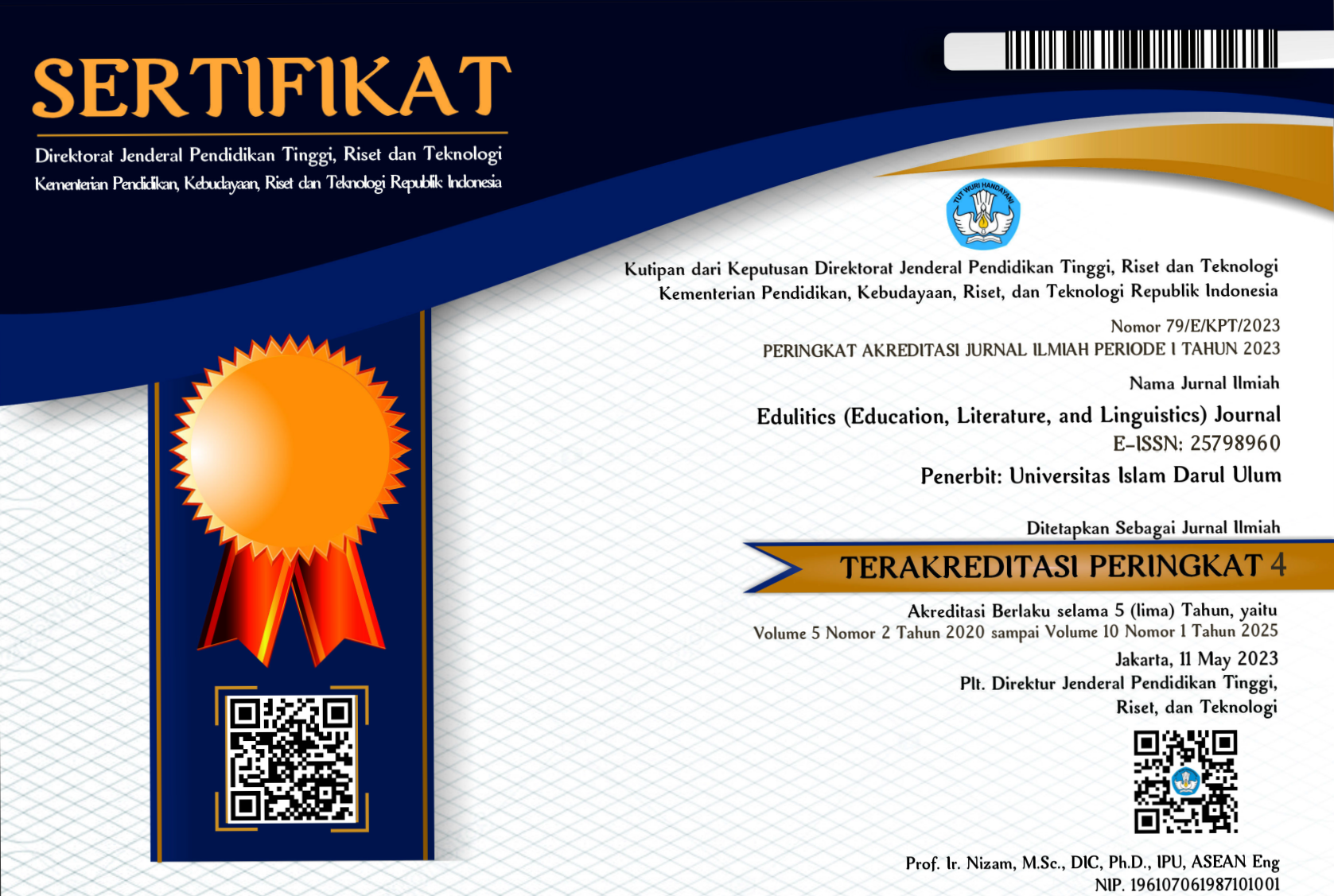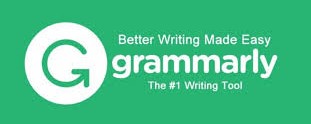Indonesian Senior High School Students' Activities in Learning Narrative Text within a Reading Comprehension Classroom
Abstract
The research was conducted to describe students’ activities in reading comprehension classroom, especially in learning narrative text. A qualitative descriptive approach was used in this research. To collect the data, observation, interview, and test were employed to gather the data of students’ activities in learning narrative text within reading comprehension class. Data from observation and interview were analyzed descriptively, while data from test were first calculated to find the mean of the score, then they were used to analyzed the minimum criteria of achivement (Kriteria Ketuntasan Minimun/ KKM). Based on the observation, it yielded that the student activities in learning narrative text were 1) identifying difficult vocabulary, 2) translating the vocabulary over dictionary, 3) asking teachers or peers to comprehend meaning, 4) writing the correction in the paper, 5) reviewing initial analysis, 6) asking teachers or peers for main ideas and supporting detail, 7) giving overall corrections, and 8) summarizing. Furthermore, the test result showed that the student's scores are different from other students such as five students getting a good score, twelve students getting enough score, and three students getting less score. The students' average score of reading is 73,75 which was above KKM. The interview result discovered that most of them thought that the eight reading activities above gave much influences on students understanding on reading narrative texts and their ability in completing the test. The research conclusion was the eight reading activities found were relevant because most students’ reading comprehension were above KKM.
Downloads
References
Alghonaim, A. S. (2020). Impact of Related Activities on Reading Comprehension of EFL Students. English Language Teaching, 13(4), 15-27.
Barth, A.E., Stuebing, K.K., Fletcher, J.M., Cirino, P.T., Francis, D.J., & Vaughn, S. (2012). Reliability and validity of the median score when assessing the oral reading fluency of middle grade readers. Reading Psychology, 33, 133-161.
Bimmel, P., & Van Schooten, E. (2004). The relationship between strategic reading activities and reading comprehension. L1-Educational studies in Language and Literature, 4(1), 85-102.
Drucker, Mary J (2003). What reading teachers should know about ESL learners. The Reading Teacher. 57(1), 22-29
Guthrie, J. T., & Wigfield, A. (2000). Engagement and motivation in reading. In. M. L. Kamil, P. B. Mosenthal, P. D. Pearson, & R. Barr (Eds.), Handbook of reading research (3rd. ed., pp. 403–422). New York: Longman.
Kirylo, J.D. & Millet, C.P. (2000) Graphic organizers: an integral component to facilitate comprehension during basal reading instruction. Reading Improvement, 37, 179-186.
Moats, L. (2004). Module 4: The mighty word: Building vocabulary and oral language. Language essentials for teachers of reading and spelling (LETRS). Longmont, CO: Sopris West.
Pang, E., Bernhardt, E. B., & Kamil, M. L. (2003). Educational practice series-12: Teaching reading. International Academy of Educational (IAE): Brussel.
Sinatra, G. M., Brown, K. J., & Reynolds, R. E. (2002). Implications of cognitive resource allocation for comprehension strategies instruction. In C. C. Block & M. Pressley (Eds.), Comprehension instruction (pp. 62-76). New York, NY: Guilford Press.
Snow, C. E., (2002). Reading for Understanding: Toward A Research and Program in Reading Comprehension. Arlington, VA: Rand
Tankersley, K., (2003). The threads of reading: strategies of literacy development. Alexandria, VA: Association for curriculum and supervision development.
Teale, W.H., & Yokota, J. (2000). Beginning reading and writing: Perspectives on instruction. In D.S. Strickland & L.M. Morrow (Eds.), (pp. 3-21). Newark, DE: International Reading Association and New York: Teachers College Press. Thousand Oaks, CA: Sage

This work is licensed under a Creative Commons Attribution-ShareAlike 4.0 International License.
Authors retain copyright and grant the journal the right of first publication with the work simultaneously licensed under a Creative Commons Attribution-ShareAlike 4.0 International License that allows others to share the work with an acknowledgment of the work's authorship and initial publication in this journal.
Authors are able to enter into separate, additional contractual arrangements for the non-exclusive distribution of the journal's published version of the work (e.g., post it to an institutional repository or publish it in a book), with an acknowledgment of its initial publication in this journal.
Authors are permitted and encouraged to post their work online (e.g., in institutional repositories or on their website) before and during the submission process, as it can lead to productive exchanges and earlier and greater citation of published work.






_(1).png)


